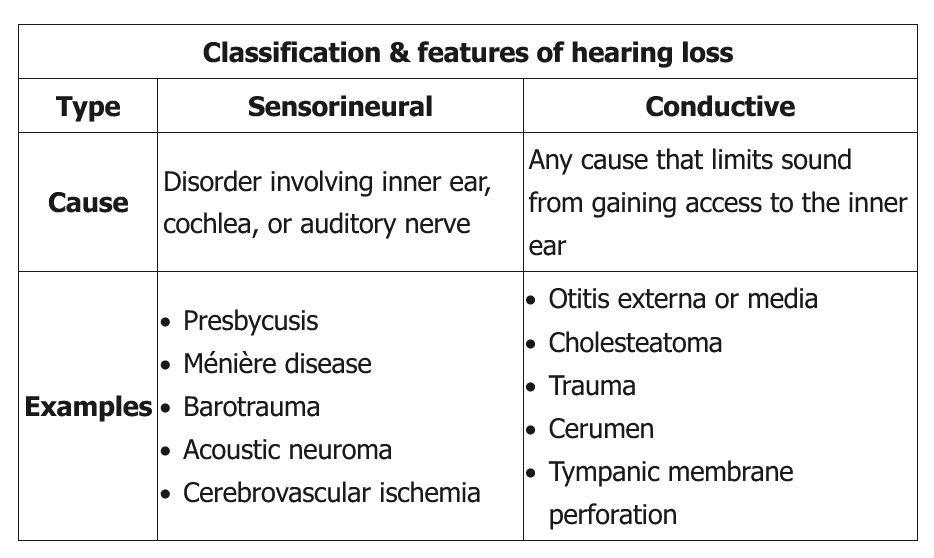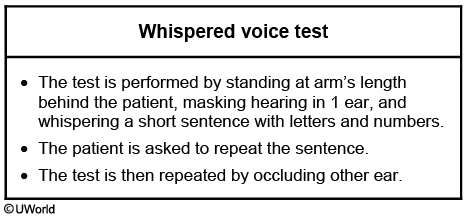presbycusis
- related: ENT
- tags: #note

This patient's presentation suggests presbycusis or age-related hearing loss. Presbycusis is a common condition that affects >50% of adults by age 75. Factors affecting onset and severity of presbycusis include low socioeconomic status, exposure to noise and ototoxins, chronic disease (eg, hypertension, diabetes, vascular disease), and smoking. Presbycusis is a form of sensorineural hearing loss caused by inner ear disorders, processing centers in the brain, or the vestibulocochlear nerve.
Patients usually present with progressive, symmetrical, high-frequency hearing loss (consonant sounds) over many years. This can be accompanied by bilateral tinnitus, vertigo, and disequilibrium leading to frequent falls. Patients have difficulty hearing in the presence of competing backgrounds (social gatherings, television sounds) but appear to do well on a one-to-one basis. Early detection and treatment are important as hearing loss due to presbycusis can cause isolation and depression.
Evaluation includes physical examination to exclude other causes of hearing loss (eg, cerumen impaction or tumors) and the whispered voice test for safe and accurate testing of hearing impairment. The Weber and Rinne tests can help differentiate between conductive and sensorineural hearing loss. An audiogram is needed to confirm diagnosis and guide treatment. Hearing aids are effective in most patients, although some with refractory hearing loss require cochlear implants.
